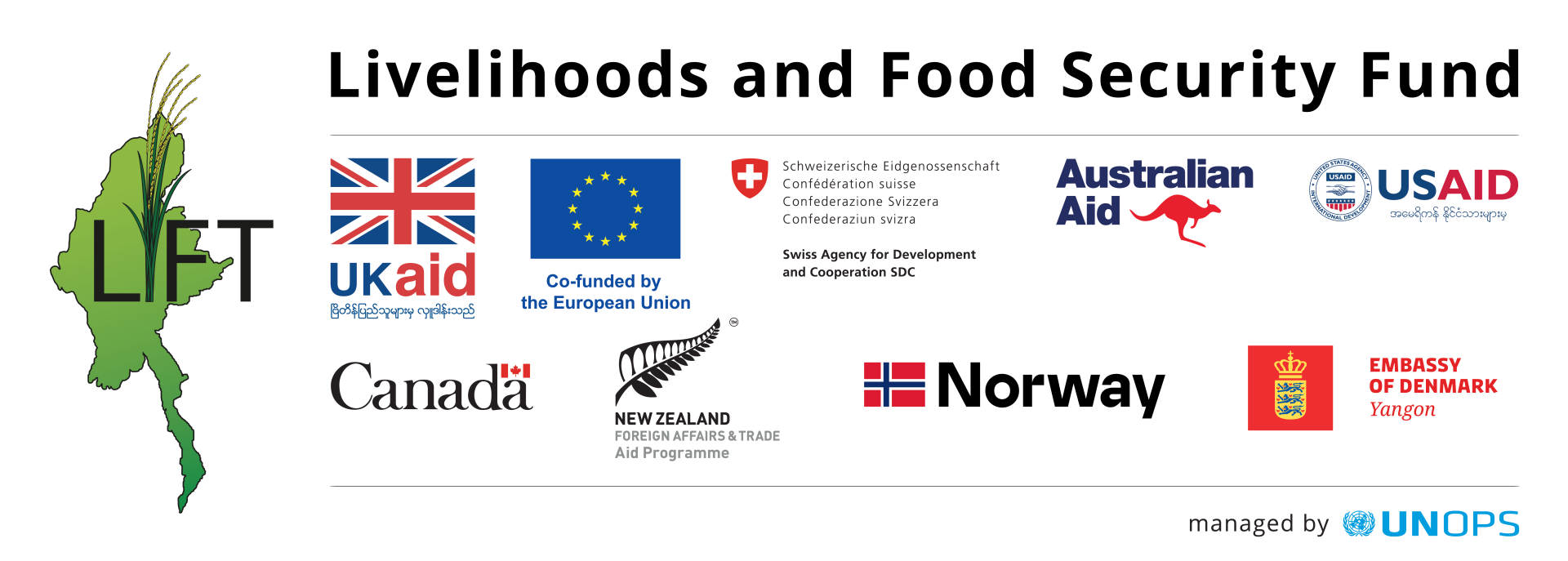This working paper explores the state of food security and nutrition in Myanmar using eight rounds of nationally representative household panel data collected from December 2021 to December 2024. Overall, the state of food security and nutrition has deteriorated in Myanmar from 2021-2024.
Key Findings
- Rising Hunger: Hunger affected over 3.0 percent of households in late 2024, and was highest in Kachin (6.5 percent), Kayah (6.3 percent), and Chin (6.0 percent).
- Increasing Urban Vulnerability: Urban households had higher hunger levels (3.5 percent) and a faster decline in diet quality compared to rural households.
- Declining Diet Quality: Over a quarter of adults (26.0 percent) and a fifth of children under 5 (21.0 percent) lack adequate dietary diversity. Women’s diet quality has worsened faster than men’s.
- Multiple Factors Affecting Risk & Resilience: Low income, conflict, and high food prices drive insecurity; remittances reduce food-related risks.
This working paper explores the state of food security and nutrition in Myanmar using eight rounds of nationally representative household panel data collected from December 2021 to December 2024. Overall, the state of food security and nutrition has deteriorated in Myanmar from 2021-2024. More than three percent of households were in moderate to severe hunger in September-December 2024. Hunger was highest in Kachin (6.5 percent), followed by Kayah (6.3 percent) and Chin (6.0 percent) in the latest survey round. Households with a low Food Consumption Score increased from 9.4 percent in December 2021-February 2022 to 14.2 percent in August-November 2023 and remained high at 14.2 percent in October-December 2024. The shares in October-December 2024 were highest in Chin (34.6 percent), Kayah (25.4 percent), and Shan (19.3 percent).
Inadequate diet diversity among adults rose from 20.5 percent to 26.0 percent between December 2021-February 2022 to October-December 2024. Women saw a faster decline in diet quality (7.3 percentage points increase in poor diet quality compared to 3.2 percentage points for men). Decreases in diet quality among adults were driven by lower consumption of animal sourced food and vegetables. In the latest round of the survey, 30.7 percent of all children aged 6-23 months and 21.3 percent of all children aged 6-59 months had inadequate diet quality.
Of note during October-December 2024, urban households faced greater food insecurity than rural households, with higher hunger rates (3.5 percent vs. 2.8 percent), and lower dietary diversity among both adults (26.0 percent vs. 25.0 percent) and children aged 6–59 months (23.2 percent vs. 20.4 percent). Regression analysis reveals low income and limited assets to be important risk factors for food security and adequate diet quality. Wage workers and low wage communities were particularly vulnerable. Rising food prices, conflict and physical insecurity increase the likelihood of poor diet quality. Receiving remittances was a source of resilience; remittance-receiving households were less likely to experience hunger or poor dietary diversity at the household, adult, and child level.
To avert a full-blown nutrition crisis in Myanmar, effective multisectoral steps are required to protect nutritionally vulnerable populations. Expanded implementation of nutrition- and gender-sensitive social protection programs, including maternal and child cash transfers, particularly to vulnerable groups is called for. Further, given the importance of remittances as an effective coping mechanism, supporting migration and the flow of remittances would help to improve the welfare of the Myanmar population.

This work was undertaken as part of the Myanmar Agrifood and Food Security Monitoring Project led by the International Food Policy Research Institute (IFPRI). Funding support for this study was provided by the Livelihoods and Food Security Fund (LIFT). This Working Paper has not gone through IFPRI’s standard peer-review procedure. The opinions expressed here belong to the authors, and do not necessarily reflect those of IFPRI, LIFT, or CGIAR.